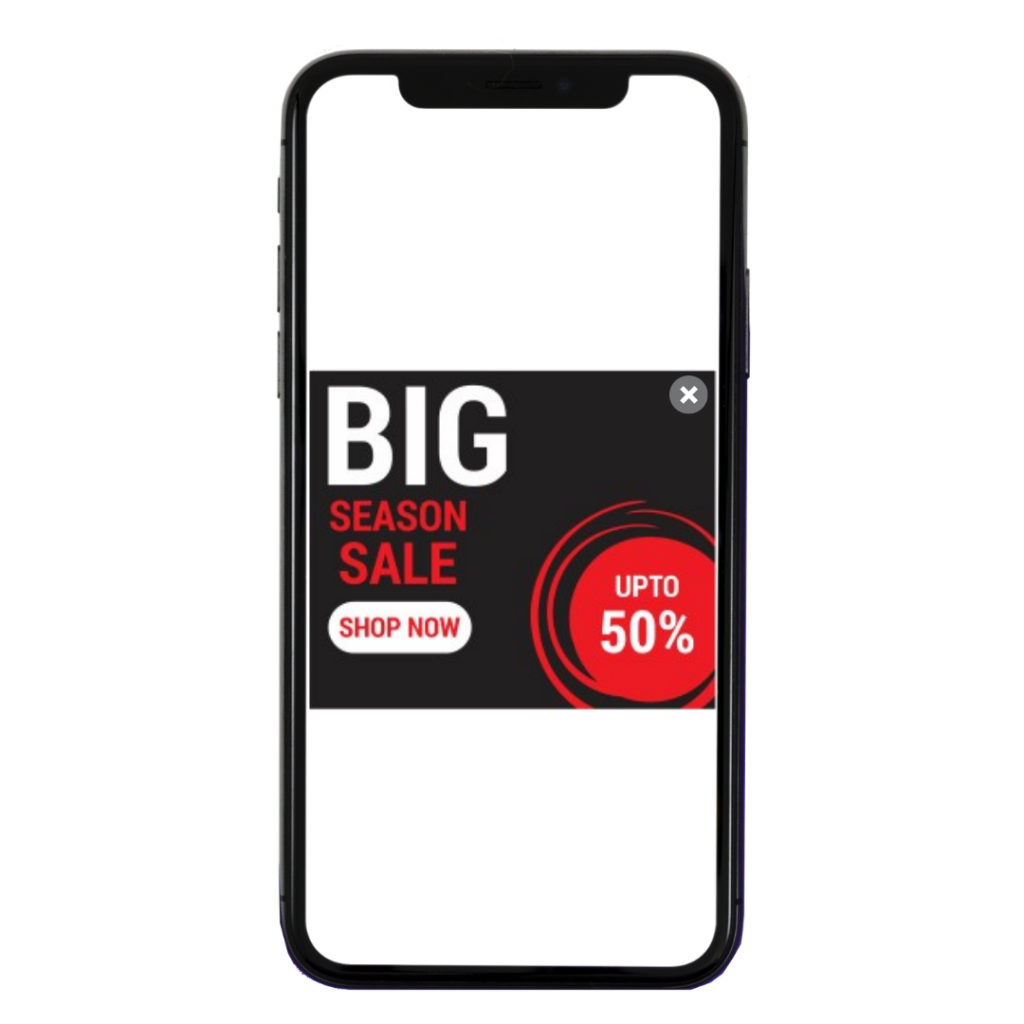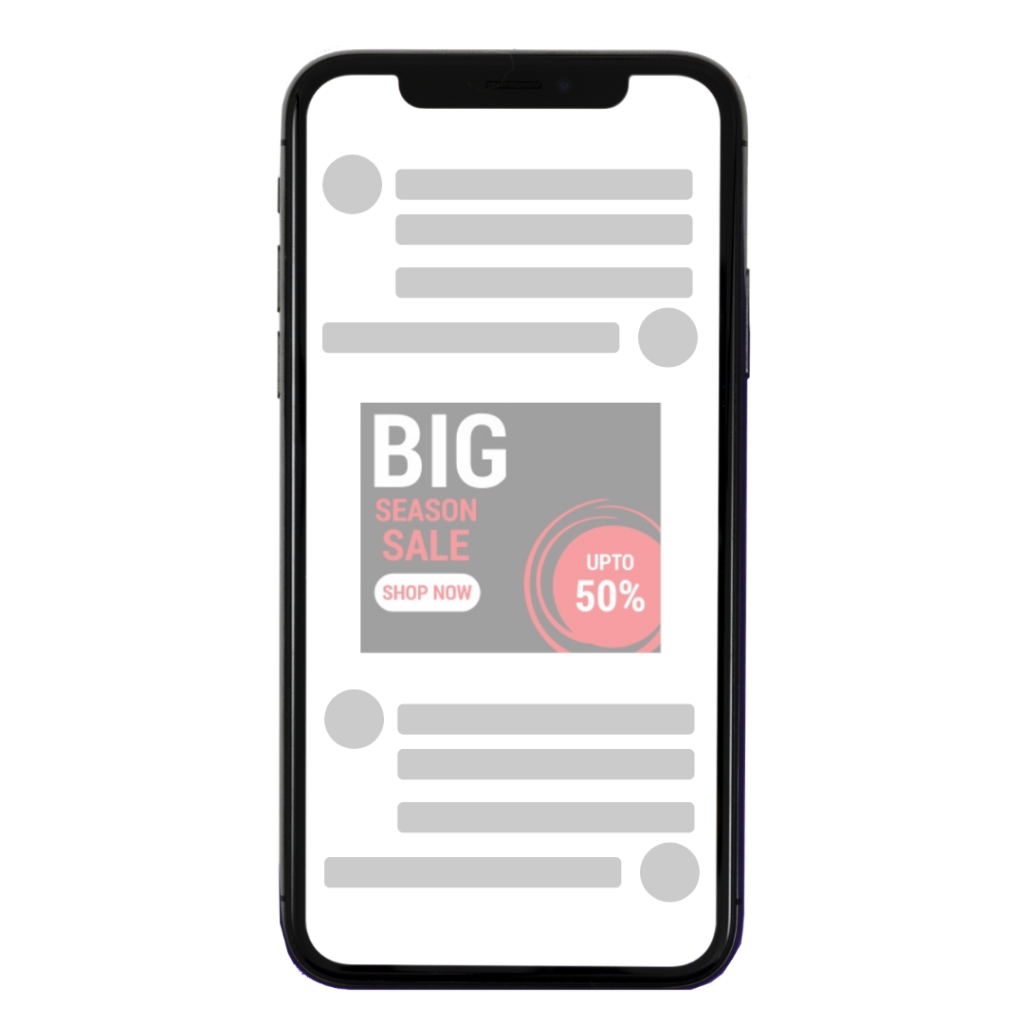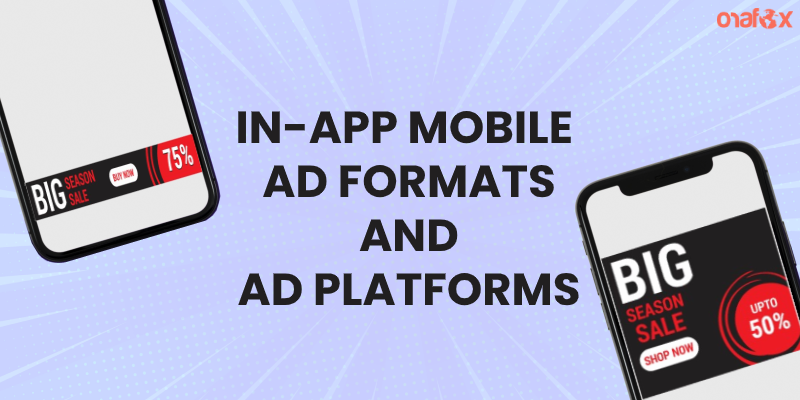One of the monetization strategies through which free apps make money is through in-app mobile ads. In 2018, the mobile ad revenue was more than $70 billion in the US and approximately $184 billion worldwide. In 2019, mobile advertising spending worldwide amounted to $189 billion and it is anticipated to exceed $240 billion by 2022.
In-app advertisement is one of the easiest ways for the app to earn money and needs less effort when it comes to implementation. Another interesting aspect of in-app mobile advertising is that it’s done by a third-party ad network. To begin with, in-app mobile advertising is specially designed to target across mobile devices such as smartphones, tablets, and wearable tech.
Why choose the in-app mobile advertisement model?
Firstly because mobile apps can adapt in-app advertisements as a natural part of the app content. Meaning that the advertisement will be more like a suggestion than a distraction to not hinder the user’s app experience.
Another important thing the app developers should keep in mind is choosing the right ad format and is not annoying for the users when it pops up. Moving forward, we have shared below some popular ad formats that the developers or owners of the app can use for in-app advertising.
#1 Banner ads

This ad format is one of the most widely used forms of mobile advertisements. The best aspect of this type is that it is less obtrusive as it appears either at the top or bottom of the app. These ads depend on brand reputation, generally are visually exciting, and include a call to action.
Banner ads are the second-highest money-making arrangement across all regions. The volume and remarkably high impression rates make them a powerful ad format.
#2 Interstitial ads

These are full-screen ad images or videos that appear while the user transitions between one app function to another. Once the ad appears it covers the entire screen. Given their coverage on the screen space they make a great impression on the users.
Interstitial ads are easier to implement and the CTR, or click-through-rate is higher in comparison to banner ads. The important thing to be kept in mind is that these ads should play after an action in the app is complete. For example, in a gaming app, when the user advances to the next level, the ad then is displayed. These ads should never interrupt when the user is engaged in the mid activity in an app or gameplay.
#3 Video ads

Another ad format that is gaining popularity is the video ads. Not only do these tell brands stories but help a great deal with brand recall. According to a survey, within 2016 and 2017, in-app video ads CTR grew 300 percent.
There are 4 types of Video ads
- Interstitial Video Ad– These appear when the user takes a break (advancing to another level in the game or, or going to the app homepage) in the app and are full-screen advertisement videos.
- Reward Video Ad– These provide the user with an in-app currency or hint or simply helps them advance to another level in a gaming app.
- Outstream Video Ad- Placed between the screen and often plays automatically when the ad reaches the viewable area. The user can pause or close the video ad.
- Instream Pre-roll Video Ad- The most popular example is the ones that we observe on Youtube. Remember those skippable ads, that appear before, in between, or towards the end of the video.
#4 Native In-app mobile ads

Since there is a lot of scope of customization, native ads are a popular mobile ad format. These ads are made in a way to look like a natural part of the application. Native ads are subtle and are non-intrusive and blend with the content of the app.
According to an approximation by Business Insider made on the data furnished by PwC and the Interactive Advertising Bureau, Native ads will account for a whopping 74% of total US display ad revenue by 2021, up from 56% in 2016.
#5 Rich media In-app Mobile Ads

Rich media ads include advanced features like audio, video, GIFs, and other elements that create a viewer engagement with the ad. They are also called ‘multimedia banners’ oftentimes.
Ads like these can also include gaming elements, making them a great format to use instead of in-app video ads. They have proved to deliver higher click-through-rate, performed 267% better than standard banner ads.
How to get in-app mobile ads mobile app?
There are services like Google AdSense or Google AdMob that offer ad spaces for your app. These automatically scan the text and other content on your app to place the most relevant and proper ads on your app. The app developers or owners get paid for every click that the ad receives.
You can set up a free account on AdSense and it up to you on how many ad slots you want for your page. The more the slots you have the higher the chances of you increasing your revenue.
Other in-app mobile ad networks are as follows
- Facebook’s Audience Network (FAN)– The platform provides you with tools, support, and valuable insights and you can choose from a range of interactive ad formats such as rewarded video, rich media ads, or display ads, etc..
- InMobi- It helps publishers increase their in-app ad earnings with combined auction solutions and header bidding for mobile apps. App developers also get access to a wide range of advertisers from premium brands, direct deals, and programmatic options.
- Media.net- It is one of the best alternatives to AdSense and a great choice for mobile traffic monetization. Media.net offers highly competitive CPMs (cost per mille) and ad units that can be put up on the screen.
- Smaato- Also known as SPX, it gives publishers a way to an ad server, RTB ad exchange, private marketplace capabilities, and more. As a publisher, you can grow ad revenues with Dynamic Demand, where impression yields are amplified on a single impression basis.
- PubMatic- They launched their OpenWrap SDK to run out header bidding for mobile in-app ads. This lightweight SDK connects to multiple cloud demand partners to enhance app performance and increase competition for your ad inventory.
All in all,
Choosing in-app mobile ads truly depends on the needs of the developer/owner of the app. We hope this blog gave you an understanding of different in-ad formats and ad platforms. As discussed above, in-app advertising is the easiest and profitable strategy for monetization. To gain more users, focus on your app performance and value it will add to them.

